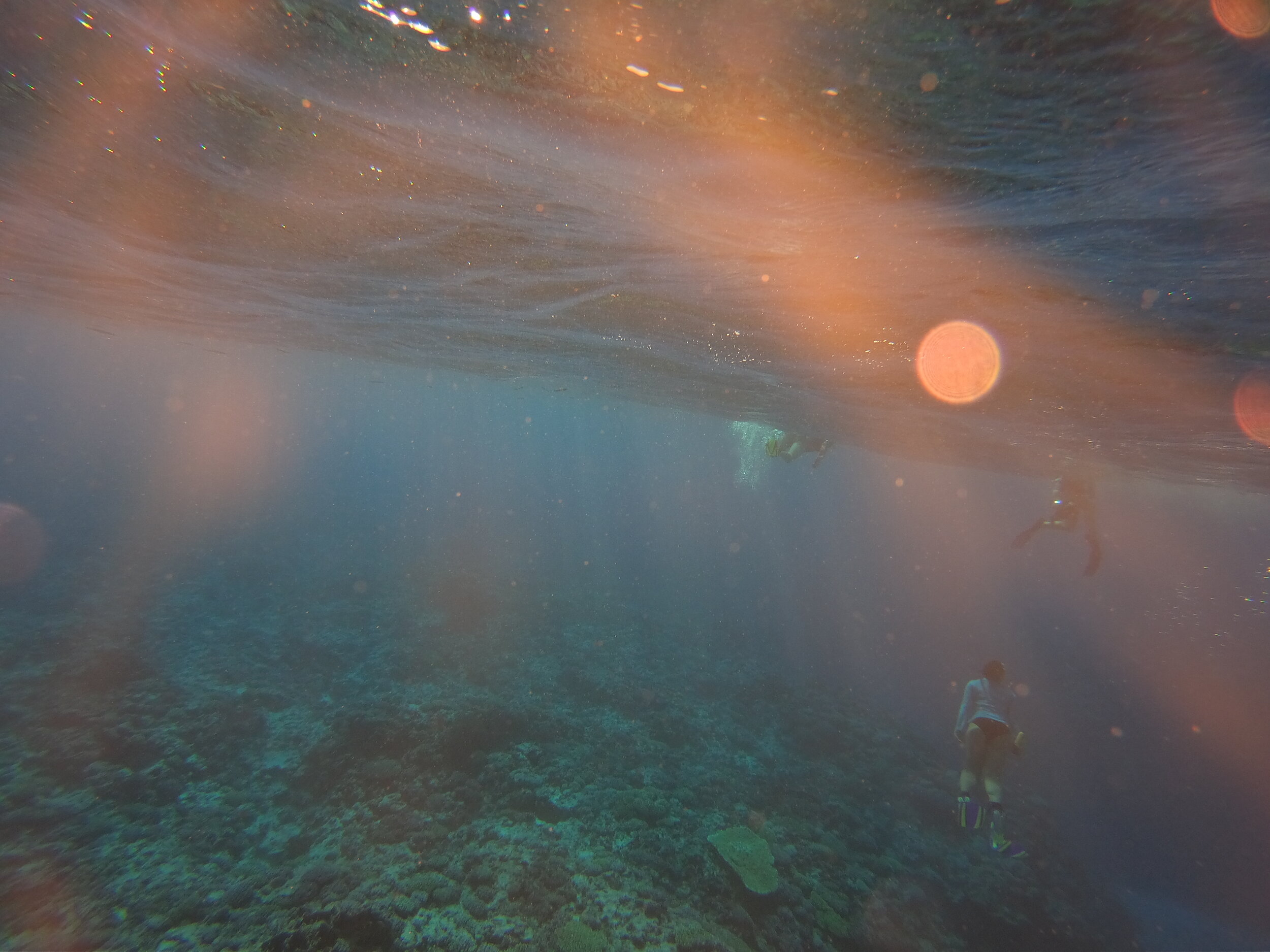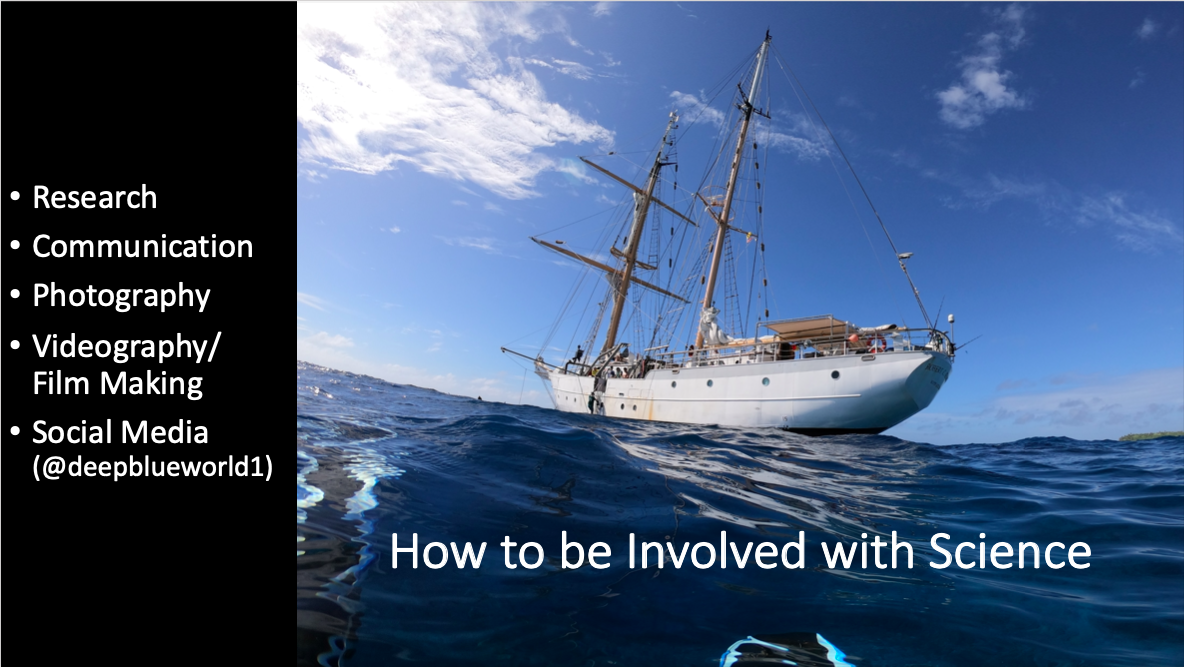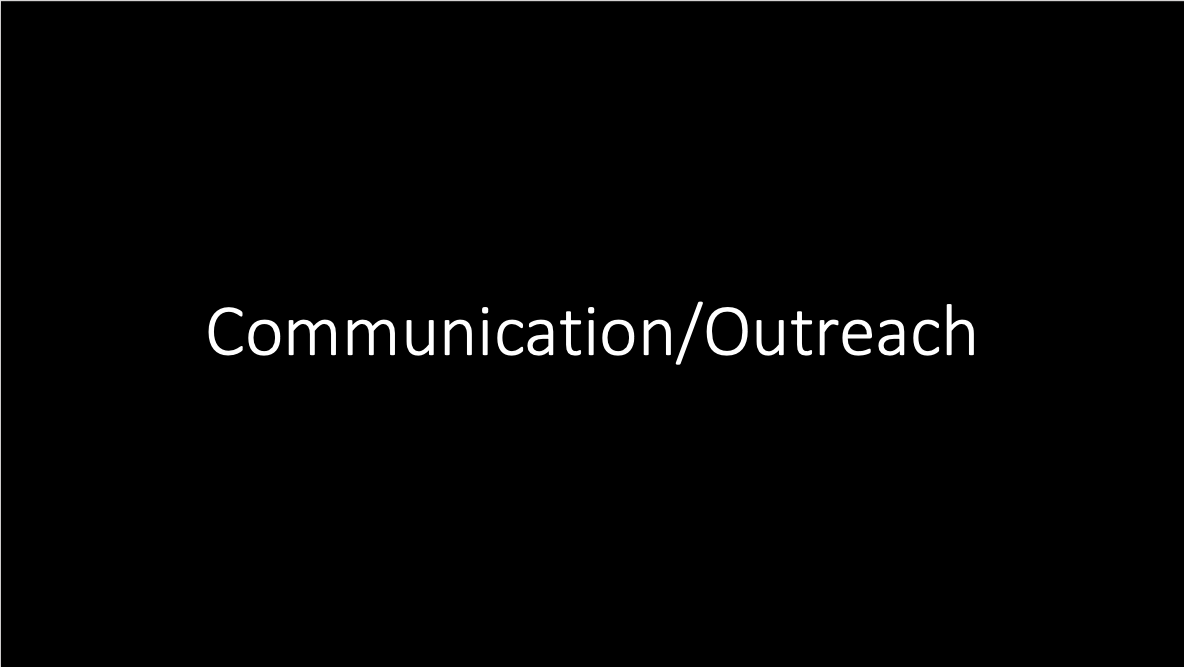
“It seems to me that the natural world is the greatest source of excitement; the greatest source of visual beauty; the greatest source of intellectual interest. It is the source of so much in life that makes life worth living.
~ David Attenborough
Excite
Science is all around us. from the air we breathe to the electricity that lights up the darkness, science is everywhere. It always struck me how often people would be surprised or impressed when I expressed interest in science. It seemed like such an interesting and logical choice to me, I couldn’t understand why more people weren’t curious about the world around them like I was. I think this is an important part of science communication, especially in light of the current climate and environmental crises. There is so much interesting science in the world and we, as communicators, can do a better job of making that science exciting and accessible to non-scientists.
While the last section contained communication that I created purely because I was interested in the topic, this section contains works of communication that I put together to get other people interested in and excited about science. Exposing people to all of the different science that is out there is such an important part of science communication. It is also the part that I find simultaneously the most exciting and challenging.
Scroll down to view each of the works in this section, or click on one of the buttons below to jump directly to that piece.
The Adventures of Jamie the sea hare
During the Introduction to the Notation in Science Communication course, one of our assignments was to write a public audience text based on the information in our literature review. I wanted to write a children's book that could get kids excited about sea hares and life in the ocean. Since in the process of writing the literature review I was conscious of the story that I was trying to tell, converting the information into a plot wasn’t that difficult. The difficulty of writing a scientific text for a general audience, and children, in particular, is translating the information in a way that everyone can understand but doesn’t oversimplify the content. In this book, I used the setting of an aquarium and a concept similar to that of Finding Dory to create a storyline that would seem familiar to kids.
For public audience texts, it is important to help the reader connect to the content and to find a way to present the information that is easy to digest. To that end, the images in this book were really important. They allowed the reader to not only listen to or read what was going on but also to see what was happening.
“Using multiple modes to convey the information ensures that readers will be able to digest the story and the science in whatever way is most beneficial for them. ”
Conveying the information from my literature review in a story for children, I am communicating the information to kids but also their parents and can inform whole families about marine science. Through communication like this, kids can be informed about rigorous science and find their own connection to the oceans from an early age. Knowing that this story would be read by whole families I wanted to include a bit more detail at the end of the book for parents or older kids and references where they could find more information.
I still really like this idea of including extra information and resources for parents and kids who are particularly interested, but I think the way I did so could be improved. At the end of the book, there are two pages with inserts of the images from different parts of the story that have more information about the science behind the story. I could definitely work on the organization of these pages to make them more approachable and less cluttered in the future. I focused a lot on making this a book that the whole family could enjoy together and I think making those extra information pages a bit more user-friendly would be a really valuable addition.
In all, I learned a lot about translating technical science into a story for a general audience, which is a process that I have really come to enjoy.
Science after high school Presentation
My high school is very small, my graduating class was 15 students. Not many of the students pursue college, and if they do even fewer leave the state. Whenever I get the chance to go back and talk to the Jr. High and High School students about life after high school, I do. This presentation was from one such talk that I gave to the eighth-grade science class in August of 2019. I had just come home after a summer of doing environmental education research and a spring studying abroad with Stanford@SEA. I went into the science class to talk to the students about how they can do science after high school and how science can be a really exciting field.
With this presentation, I wanted to get these kids excited. They were in eighth grade, so they weren’t thinking about life after high school yet, but I wanted them to see that there were more opportunities than what we are exposed to in the county. I wanted to show them that I came from that same school, sat at those same desks, and now I am studying science and traveling around the world for school. To get the students excited about science I used a lot of photos and videos. These visuals allowed them to really see what they could do with science. The stories I was telling about what I was doing with science went with each of the photos or videos to give real context to these opportunities. The use of photos and videos and not many words on the slides allowed them to see themselves in the stories that I was telling and get excited about what they could do after high school.
Giving this presentation, I shared new information with the students, while also reflecting on the path that I had taken to get to where I am.
“Communication is as much about sharing information with others as it is about internalizing that information for yourself. ”
Through this presentation, I was able to share a bit of my path with others and in doing so recognized all that I have learned and what I still want to pursue. I recognized the value of science communication in that it levels the playing field and allows everyone to be on the same page. Presentations, photos, and videos, like I used here, transported all of us onto the oceans and into nature. For the duration of my presentation, we were all there, exploring together. This sense of connection that is fostered through effective communication is what I love so much about science communication. The presentations, pieces of writing, and communication that we produce are as much for ourselves as they are for our audience. Being able to effectively bring people together through that communication is what makes it all worthwhile.
An Introduction to The Social Ocean
During the winter of my senior year, I took a class called “The Social Ocean.” For this class, we were asked to do a final project on something to do with the “social ocean.” It was a broad prompt so we could interpret it as we would like and explore some aspect of the course that interested us in more detail. From the beginning of the course, I was really interested in thinking about the myriad of relationships that people have with the oceans and the world around them. I wanted to talk to people and explore these relationships in hopes of finding some common threads. The oceans are inherently linked to human society, and culture and being able to talk to people and communicate those relationships with others is a vital component of garnering support for marine conservation.
For this project, I conducted two interviews with women who have different relationships with the oceans and wrote a blog post to introduce this series that I want to continue on my blog. Getting to talk to people about their relationship with the oceans was an honor. Through this project, not only was I able to connect with people about the oceans, but I was also able to explore interviewing and communicating other people’s thoughts. I was able to talk to people about their experiences and views on the societal importance of the oceans and what the individual’s role might be in protecting the oceans. This project allowed me to talk to people and explore relationships around the oceans but I was also able to practice synthesizing other’s thoughts and placing personal opinions in conversation with each other, much like I have done with past scientific research in literature reviews. This project allowed me to explore a more journalistic side of science communication and practice communicating human thoughts and findings around science instead of just pure scientific findings.
I really liked the personal connection that I felt in writing this piece and the fact that the people and human experience are so central. I think a lot of times in science communication we focus on the dissemination of scientific findings and information, which is important, but there is a whole other aspect that is human. Science wouldn’t exist without humans asking the questions and driving discovery. There would be no need to understand the impact of acidification on coral reefs if we weren’t spewing carbon dioxide into the atmosphere.
“Humans are at the center of science and in this project, I was really able to put people in the center of my communication.”
This is something that I hadn’t really done before and something I want to continue to explore. Like I say in this blog post, this is just the introduction to a series of similar posts. I am excited to continue to be able to place people in the center of science and see what sorts of connections or ideas might come out of these conversations. Being able to communicate people’s relationships with science and learning from what others have to say is an important part of science and science communication in particular. Through this blog post, I was able to explore people’s connections to the oceans and in doing so realized how important the human dimension of science is.
All photos and videos included on this page and in the presentation were taken by Jordan Ferré.












































